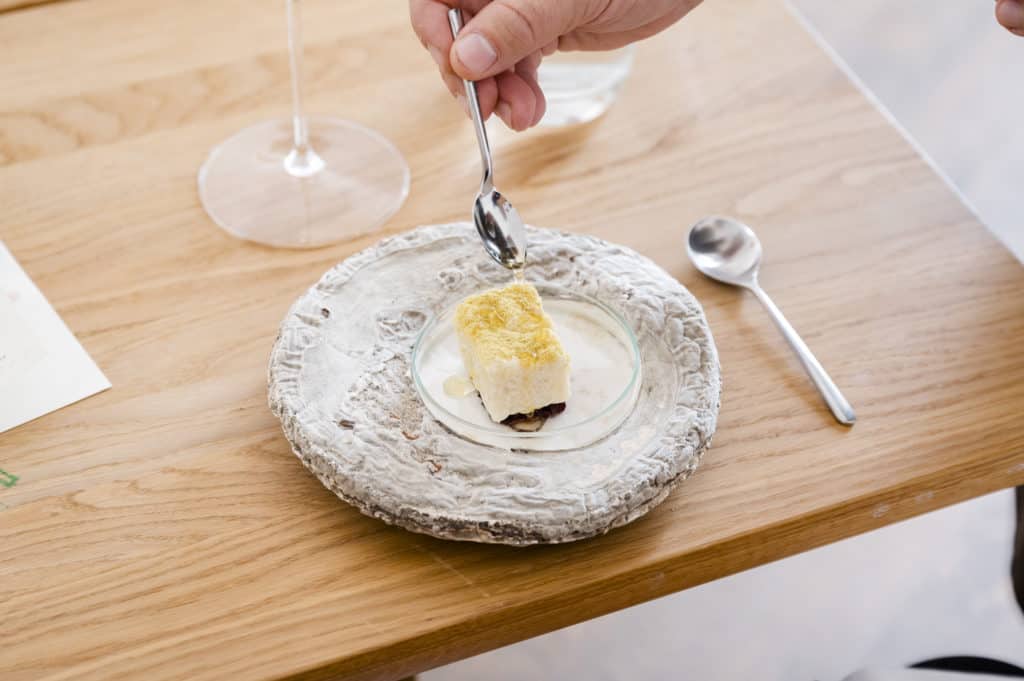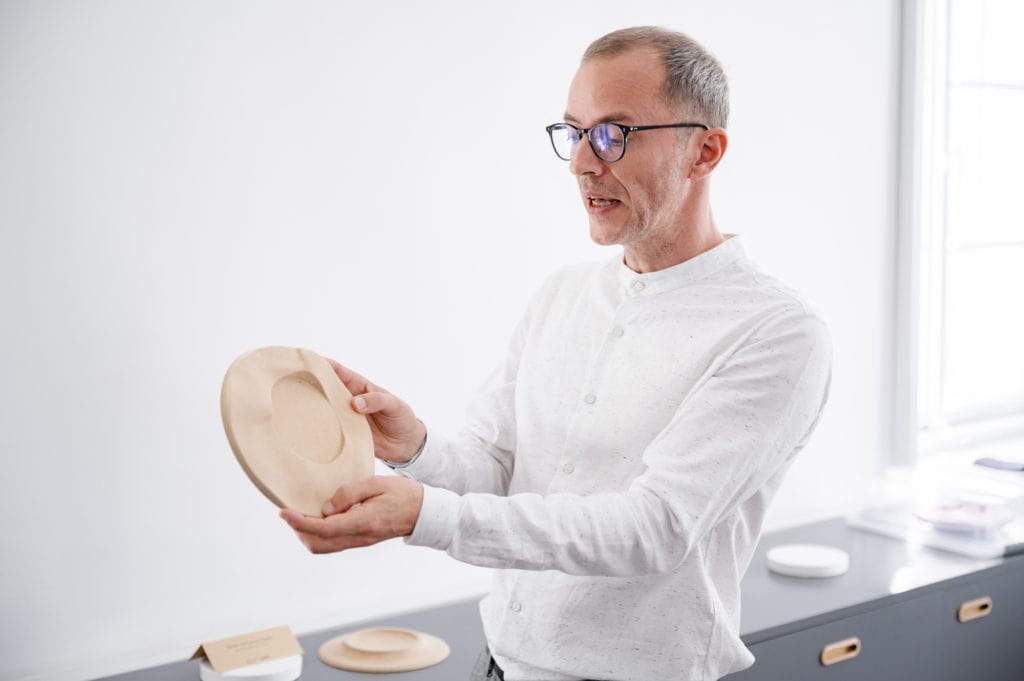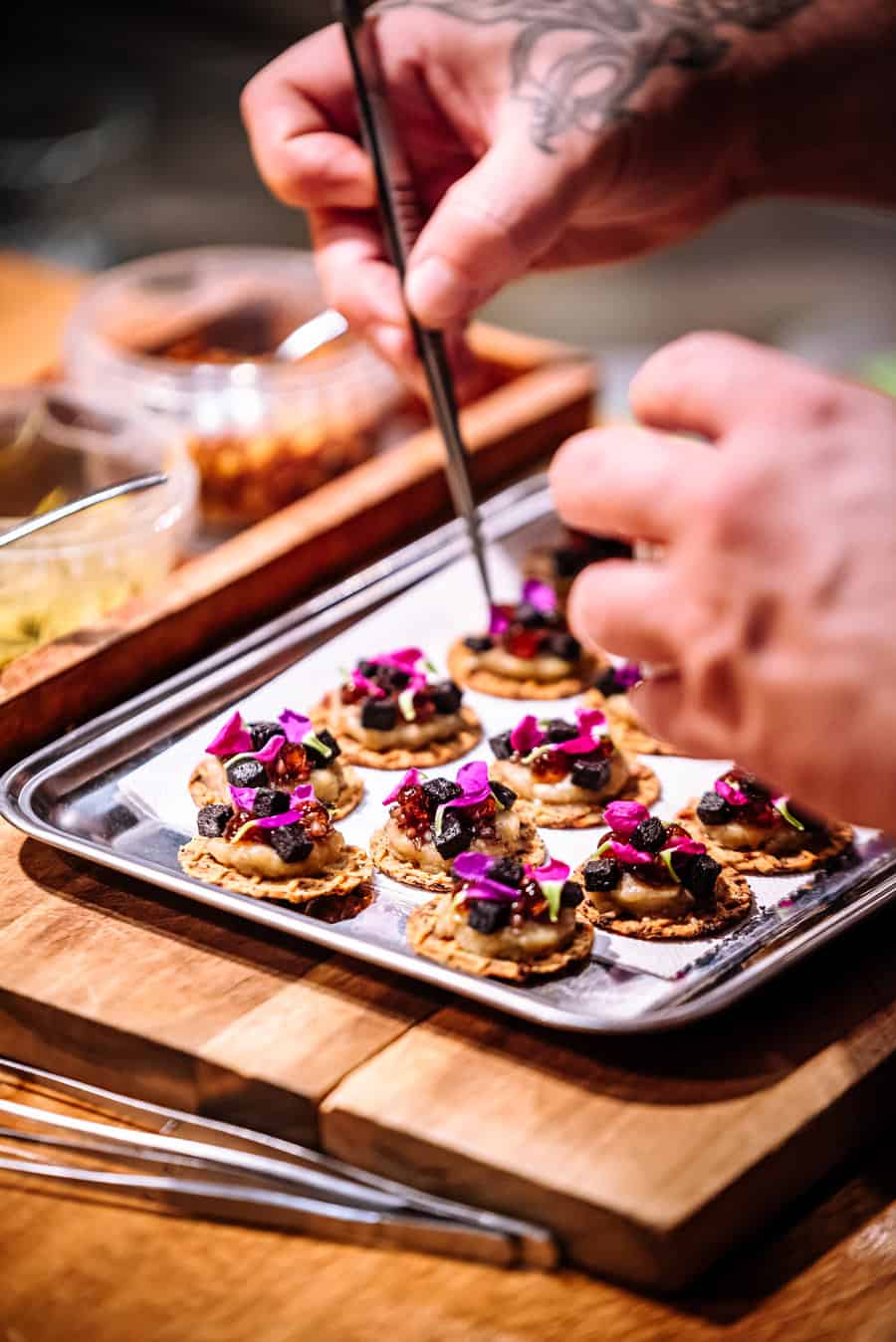The SALT team is constantly looking for kitchen practices and gastronomy-related solutions that help food culture become more sustainable. As part of the joint research conducted by Moholy-Nagy University of Art and Design and SALT, a new, exciting-looking plate made from a blend of fungal mycelium and hemp was born that makes enjoying the most delicious dishes as environmentally-friendly as possible. At SALT, dessert is served on these innovative plates.
We talked to the researcher of MOME and data visualisation expert, Mihály Minkó.

What is exactly fungal mycelium that SALT’s dessert plates are made of?
What is colloquially called a mushroom is actually the fruiting body of fungi. However, the mycelium is also part of the mushroom: a network that permeates the environment (soil, wood and even skin) that the fungus lives in. The mycelium is the tissue of the fungus itself, which absorbs the nutrients available in the environment. The mycelium is made up of hyphal cells through which nutrients are absorbed and transported to the other parts of the network.
How did this interesting material make it on MOME’s and the design world’s radar?
For the design world, this material is interesting due to its extremely favourable qualities. Not only is it superior in terms of its environmentally-friendliness (it is compostable and fully biodegradable), but it also has excellent sound insulation properties, and it does not burn with flames, but embers. These two characteristics have lead to its use as an insulation material in the construction industry. Another big advantage is that it is a material that can be moulded into any shape of your liking.
How does the raw material of mushroom spawn become a moudable material?
The mycelium is grafted onto hemp, it weaves through it, then this pre-weaved material is put into a mould that the grafted hemp gradually fills up, giving you the shape of the negative mould. When it is done, we extract the water from the fungus to stop it from growing. What you get is a relatively hard, but very light material similar to cork or styrofoam with a unique appearance, which then can be used in many different ways.

Does the type of mushroom used make a difference?
Yes, different spceies of fungi have very different mycelial structures, and now it seems like ganoderma is the most suitable for design purposes. Some species of oyster mushrooms are also suitable, but they do not produce as strong of a mycelial network as ganoderma.
This process of turning mycelium into a material for design purposes seems very complex. Is there a historical precedent for using mycelium?
There are examples of using the fruting bodies for purposes other than eating: they used to be made into leather-like materials in Transylvania, and there is a company that still does that with all kinds of hoof fungi. However, I don’t think it’s very traditional to use mycelium this way as the process requires very special conditions, a germ-free medium, a laboratory. You can’t produce it in an everyday environment. Nevertheless, interest in mycelium has recently increased worldwide. In the US, Ecovative has been producing it on a large scale for about five years now, mainly to serve the packaging industry. For example, they use biodegradable mycelium materials to replace styrofoam packaging for household appliances.
How expensive is it to produce products made of mycelium?
I don’t think it’s too pricey. What costs money is the hemp straw and the energy it takes to dry and create a temperate environment. Germination is also needed, which requires some energy and water. To be able to see the costs more accurately, larger volumes of production with this method is required. The above-mentioned US company already has exact figures for how many pieces they need to produce in a mould to make it worth their while. Since the numbers are in the tens of thousands, there is clearly a strong demand for products made from mycelium. However, it’s important to note that scaling up and large scale production requires very serious biological and especially microbiological, knowledge.
How unique is it to use this material in gastronomy?
It is completely unique not only in Hungary but probably in Europe as well. It’s a very forward-looking initiative, for which the best place to experiment is SALT. The plate design by Dorottya Sinkó-Kalocsai has achieved an organic design that fits very well with SALT’s philosophy and has resulted in a very beautiful shape.

How much trust people have nowadays to eat from a plate made of mycelium?
It takes an open mind, that’s for sure, because it’s a divisive issue and for many people it’s a bit bizarre. Some people like to eat mushrooms, some don’t, and some find fungi as living organisms generally strange. I think it’s fine that it’s divisive, the point is to bring a design methodology to the foreground that replaces plastics and energy-intensive processes to produce products with less ecological impact. In the near future it’s very likely that we’ll all eat bugs from mushroom platea as the way the world works right now is unsustainable. At SALT, desserts are served in a Petri dish on the mycelium plate so that the food doesn’t have direct contact with the plate and also to keep the beauty and texture of the mycelium for as long as possible. However, even if these plates get damaged, they can be replaced in a completely environmentally-friendly manner, and thanks to the way they are made, as waste, they are also environmentally-friendly and biodegradable.
In terms of aesthetics, what do these plates bring to the table?
On the one hand, it’s crucial that each plate is completely unique. Naturally, this could be achieved with other techniques as well, however I find it extremely exciting that we are working together with fungi here. We cooperate with a living matter in order to produce a plate.
What other plans do you have with this material?
For now, we are going to take a deep breath and draw our conclusions. During the project, we’ve faced many exciting design challenges. For example, we’ve worked a lot on how to fit the elements together in an aesthetically-pleasing way and what moulds we should use. We had to go beyond the traditional framework. In the coming period, finding ways for the production to become scalable will be paramount, to pinpoint the amount of products that makes it profitable to produce the plates, and what kind of design theory aspects are involved in this work. I think we are about to face some very interesting challenges.
